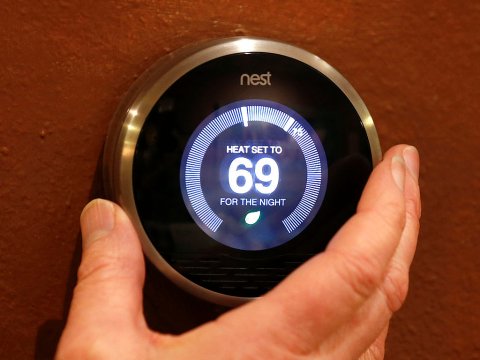The Analytics of Things

Originally published by Tom Davenport at the Wall Street Journal blog.
The press and blogosphere are full of references to “The Internet of Things” or even “The Internet of Everything.” It’s great to connect inanimate objects to the Internet, of course. But that’s only a first step in terms of doing something useful with all those connected devices. “The Analytics of Things” are just as important, if not more so.
This term, which I was first exposed to by analytics consultant Rob Stevens of First Analytics, is useful for pointing out that connected devices generate a lot of data, and that data has to be analyzed to be useful. It’s also true that analytics are necessary to make connected devices smart.
George Frey/Getty Images
A Nest thermostat
Take, for example, my Nest thermostat. It’s a pretty cool device, I must say, and I can see why Google Inc. wanted to buy them. It’s an example of TIoT if you want it to be—it works both on connected and in non-connected mode—but it’s the analytics inside and around the device that make it particularly valuable (in addition to the cool design and user interface).
The thermostat has embedded analytics that help it decide when to turn itself down. It knows when people are in the room, and what times of day they normally appear and disappear. So it’s smart enough without being connected to save energy with little or no user involvement.
If it’s connected, you get some other benefits that often accrue to TIoT devices. Remote monitoring and control is one. When it’s really cold in Boston, as it is today, it’s great to be able to tell Nest to turn up my heat before I get home (if I could only remember to do so). I can also check to make sure the away temperature won’t freeze my pipes.
The other benefit from connection is analytics-based, although right now it’s just descriptive analytics. I can get a monthly energy usage report on how much heating and cooling I have done over the previous month, which is useful in a) determining whether my expensive Nest thermostat has saved me any money; and b) tuning the thermostat further.
In short, there are connected analytics and disconnected analytics in the Nest. They’re both useful, but I find the disconnected ones the more valuable of the two. If you’re creating a connected device, you need to think in advance about the mix of connected and disconnected analytics you will offer. Disconnected analytics, of course, require more data storage and computing power. Connected analytics allow storing the data and doing the processing on your site or in the cloud.
Despite the fact that the cost of communications for TIoT devices is falling all the time, it would add up to have them be connected at all times, particularly if there’s no Wi-Fi around. So that might influence your design process about how much smarts to include in the device itself.
The primary virtue of connected analytics is that you can aggregate data from multiple devices and make comparisons across time and users that can lead to better decisions. Nest could tell you—although it doesn’t yet—that your energy use is high for your geographic area, which might prompt behavior change. Tesla can determine that its cars are being driven too fast during test drives, and then download software that restricts test drive cars to 80 miles per hour(which I was disappointed to discover, but it does makes sense for them). A municipal government could analyze traffic data from sensors in roads to determine where to add lanes and how best to optimize stoplight patterns.
We’ll learn much more about the analytics of things as these connected devices proliferate. We’ll learn how to extract the data from them for analysis, and where best to locate the analytics. We’ll learn what kinds of analytical features and functions are most helpful. For now, it’s just useful to remember that The Internet of Things is only useful if those things are smart, and that will happen through The Analytics of Things.
